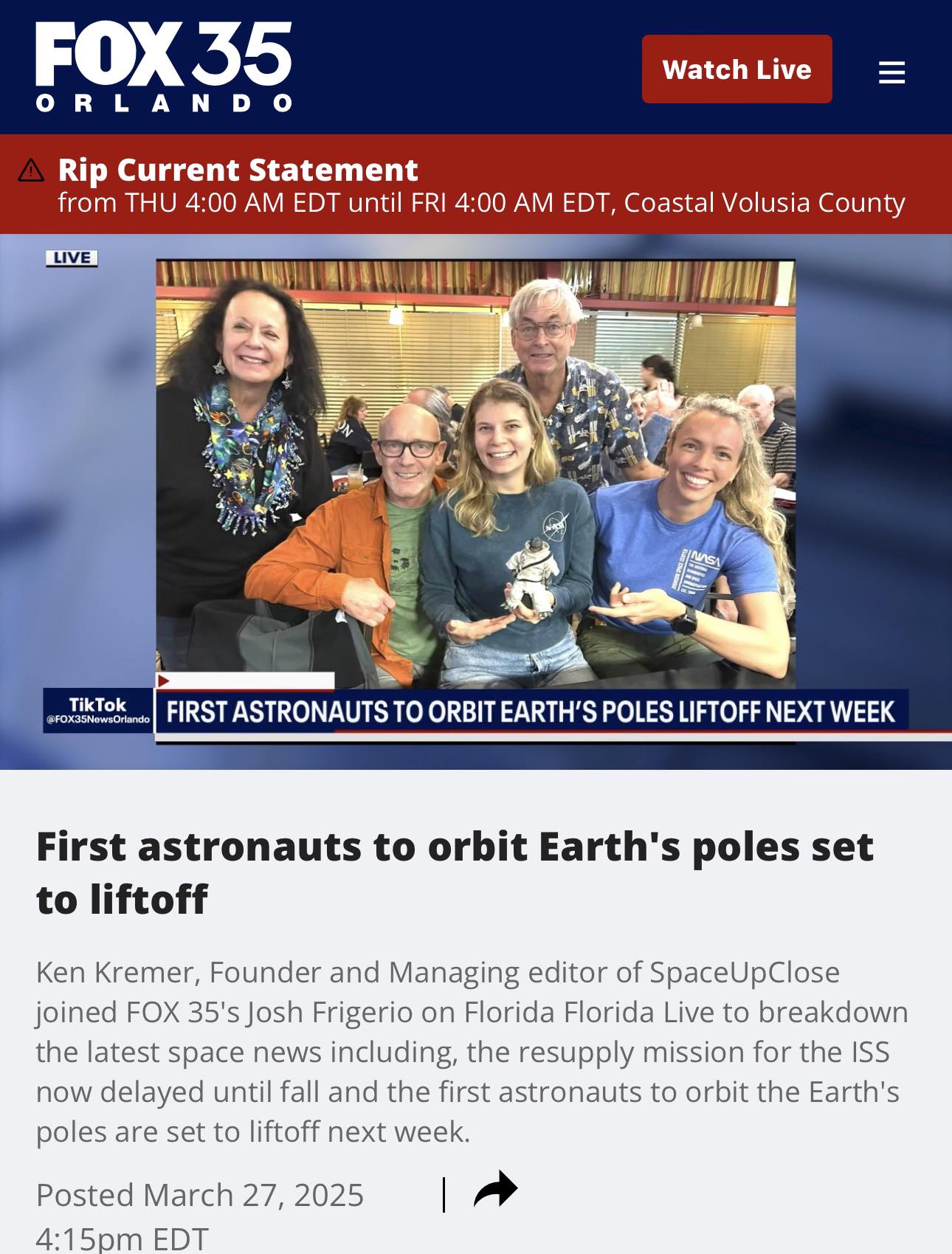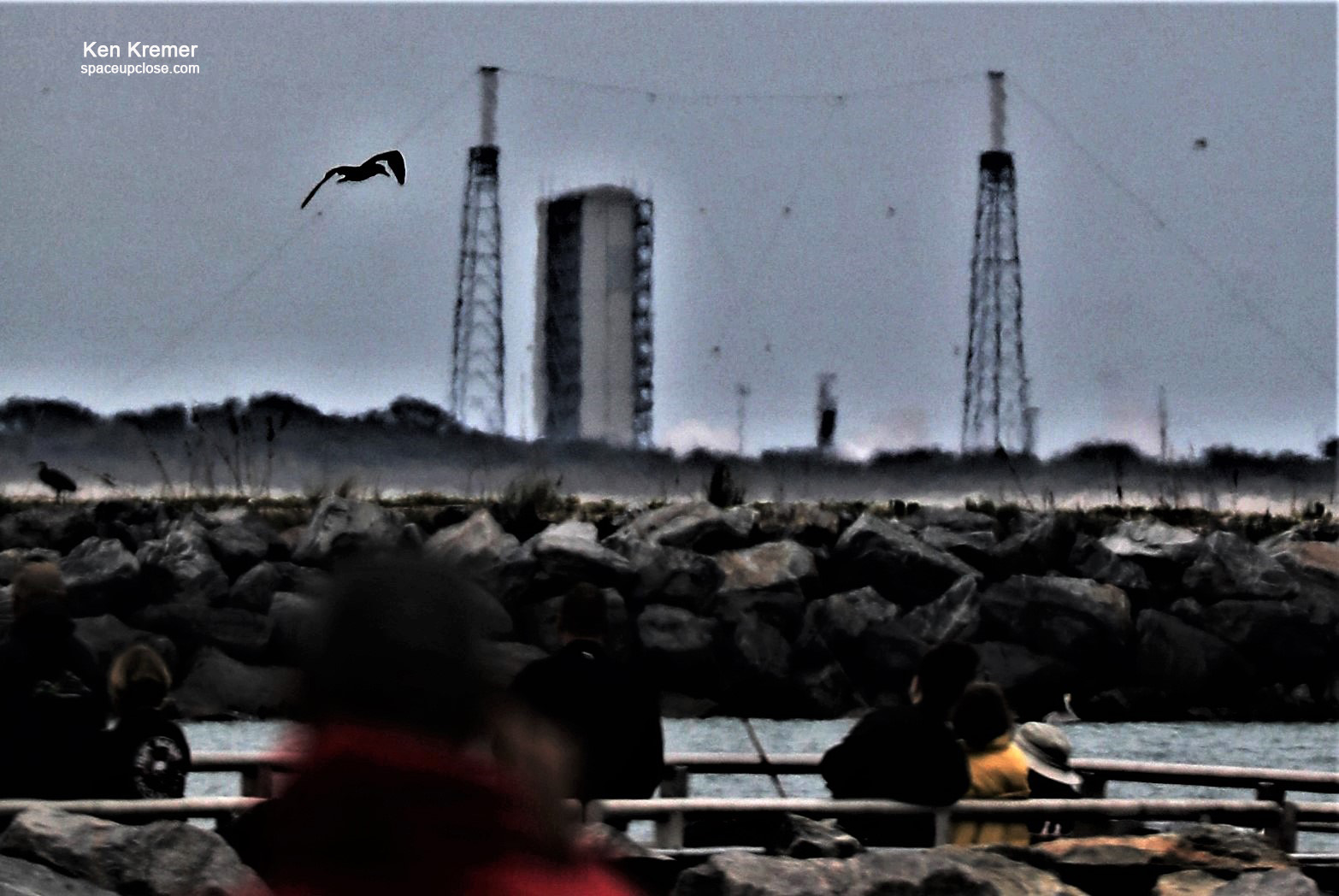
For SpaceUpClose.com & RocketSTEM
JETTY PARK, FL – A T Zero telemetry issue detected upon ignition of the first stage engines forced Astra – a new small sat mission launch provider – to scrub the 2nd attempt to launch their 1st operational rocket on an orbital flight test from Cape Canaveral on a demonstration mission with four cubesats sponsored by NASA and which could not be resolved before the launch window closed Monday afternoon, Feb. 7 – under decent weather conditions.
Astra has now rescheduled the launch of their Rocket 3.3 to Thursday afternoon, Feb. 10, to a 1 hour launch window opening a bit later at 3 p.m. EST (2000 GMT) rather than 1 p.m.
Launch attempt update: @NASA’s ELaNa 41 mission is scheduled for Thurs., Feb. 10. Launch window opens at 12:00pm PT / 3:00pm ET (20:00 UTC). pic.twitter.com/pE1mZo0jRv
— Astra (@Astra) February 9, 2022
The Space Force weather forecast is extremely favorable at >90% GO for Thursday under mostly sunny skies with the Primary Concern being the Cumulous Cloud Rule.
The inaugural flight of the tiny 43 foot tall (13.1 m) tall Astra launch vehicle from Cape Canaveral counted down all the way to T Zero at 1:50 p.m. EST (1850 GMT) Feb. 7 for the 2nd launch attempt from at pad 46 and the five Delphin 1st stage engines ignited briefly creating a visible vapor cloud – but computers halted the blastoff forcing an ignition abort after finding something wrong with the telemetry transmitting from the rocket to keep it safely on the ground and enabling another try.
Abort at T-0. Teams are currently reviewing. We have time to try again. Stay tuned.
— Astra (@Astra) February 7, 2022
Standing down today due to a minor telemetry issue. We are giving the team time to complete a thorough review and will provide an update on the next launch opportunity for @NASA’s ELaNa 41 mission soon #AdAstra
— Astra (@Astra) February 7, 2022
Astra tried to recycle for another attempt but ultimate decided more time was needed to assess the situation, tweeted Astra CEO Chris Kemp.
Abort right after all engines successfully ignited. Team is reviewing data.
— Chris Kemp (@Kemp) February 7, 2022
Standing down today. While we considered another attempt today, out of an abundance of caution, we are giving the team time to complete a more complete review of the data. We will post updates on @Astra’s Twitter feed.
— Chris Kemp (@Kemp) February 7, 2022
The prior attempt on Saturday, Feb. 5, was scrubbed due to a failure in a critical radar hardware system operated by the U.S. Space Force in the Eastern Range that must be operational to ensure a safe launch and that could not be repaired in time before the launch window closed.
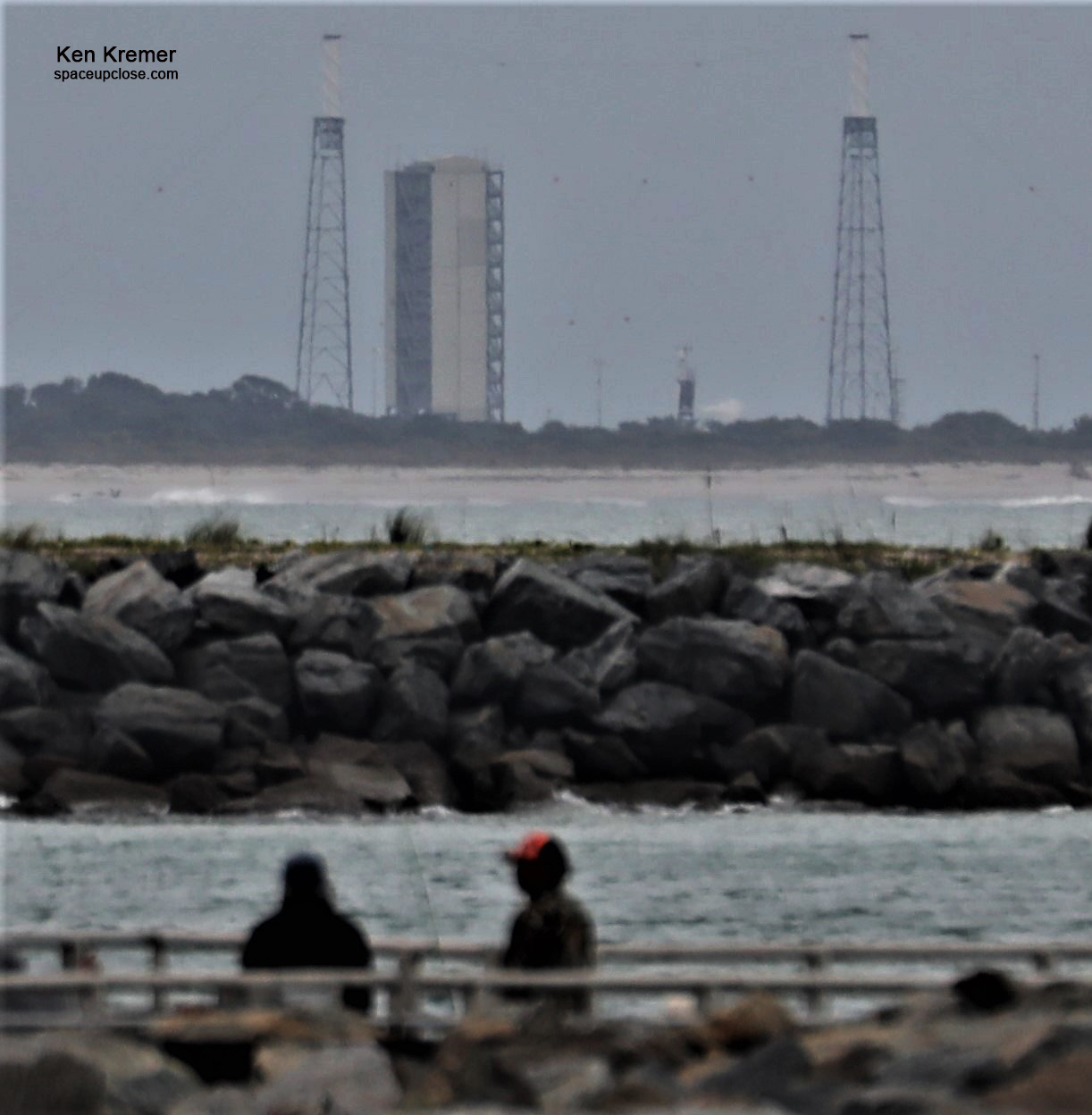
That initial Astra Rocket 3.3 launch attempt from pad 46 came despite completely overcast gloomy skies and extremely high winds over the Cape Canaveral region and what appeared to be truly unfavorable weather.
The weather was far better on Monday with more modest winds and less thick clouds – although the launch attempt was pushed 50 minutes due to exceeding the ground winds constraint
Mondays launch window extended for 3 hours from 1 p.m. to 4 p.m. on Space Launch Complex 46 (SLC-46) on Cape Canaveral Space Force Station, Florida.

Astra was attempting to launch their tiny new Rocket 3.3 also known as LV0008 on the ELaNa 41 mission carrying four small cubesats sponsored by NASA. ElaNA means Educational Launch of Nanosatellites
Astra was awarded a $3.9 million launch contract from NASA for the ElaNa 41 cubesat mission
The Astra launch team had fueled the rocket with liquid oxygen (LOX) and highly refined kerosene
LOX venting was visible from our viewing location at Jetty Park beach about 5 miles distant from pad 46 at the time the scrub was called at 1:50 p.m. when we briefly saw the engine ignition exhaust.
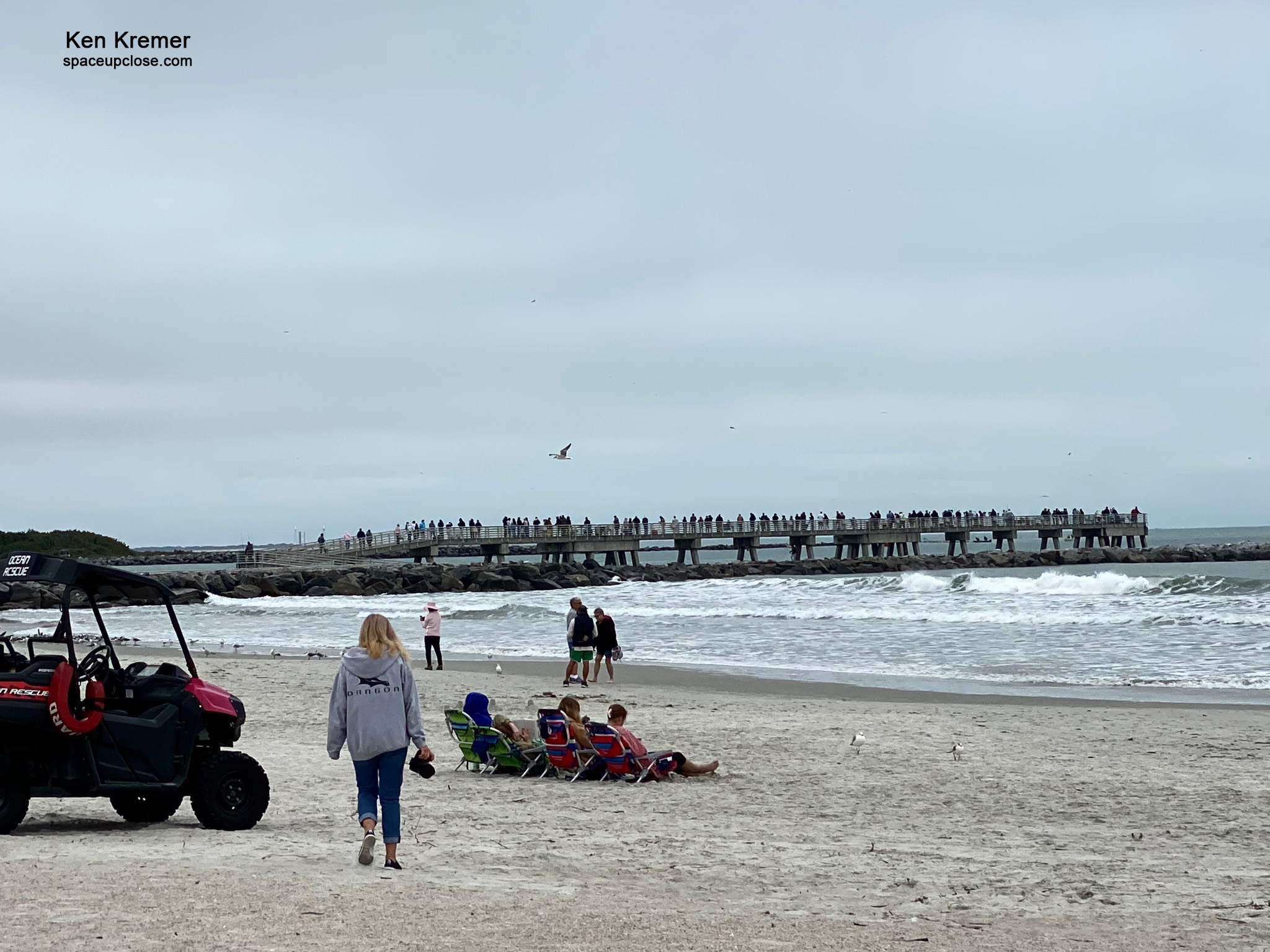
Enjoy our photos of the Astra launch attempt taken by Ken Kremer for Space UpClose.
Astra is a new launch provider targeting the small satellite market with their tiny 43 foot (13.1 m) tall launch vehicle which would be the smallest ever to launch to orbit from the Cape. It measures 52 inches (1.3 meters) in diameter.
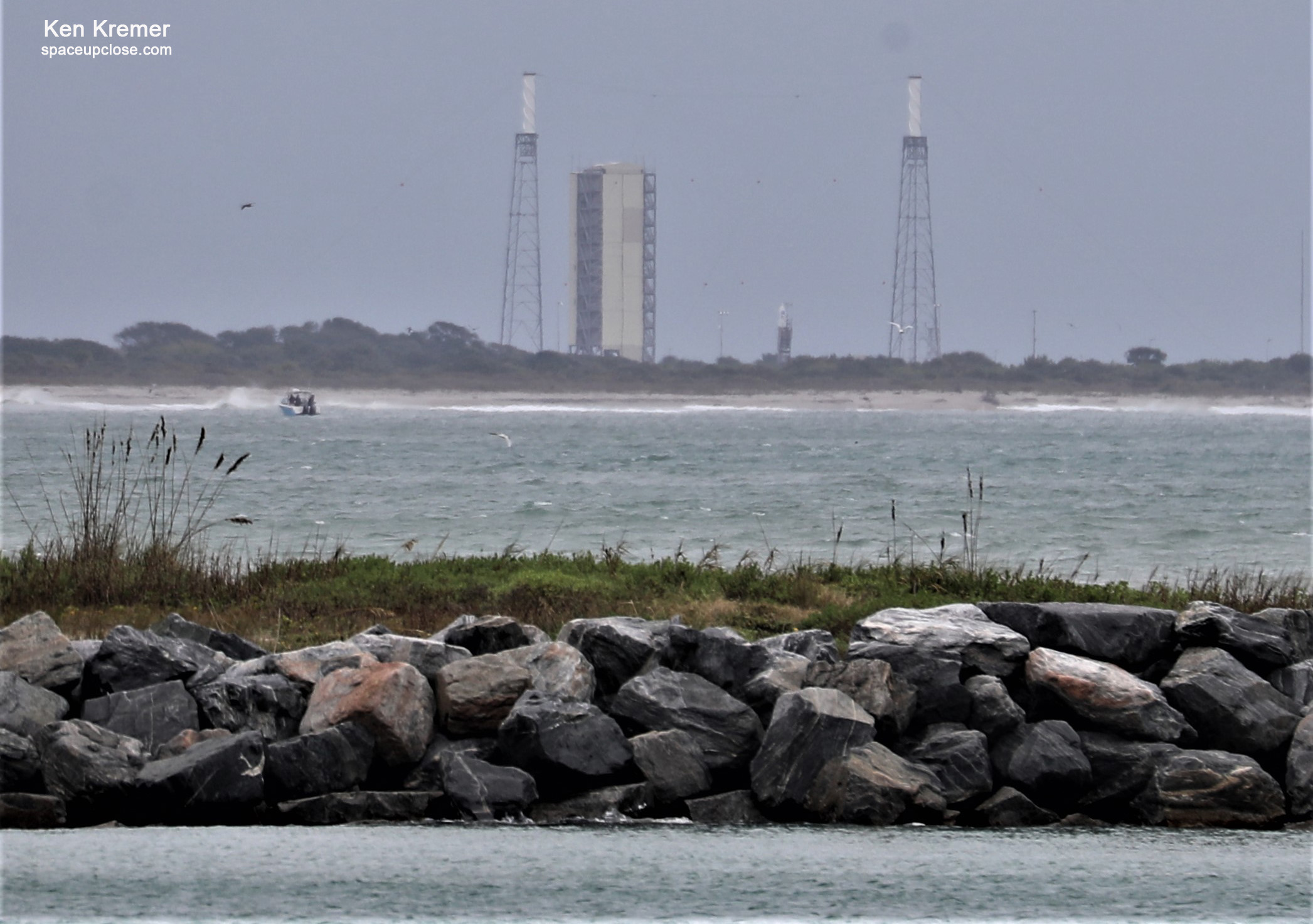
The Rocket 3.3 is capable of carrying payloads of up to 110 pounds (50 kilograms) into an orbit at an altitude of 310 miles (500 kilometers).
This mission is flying to an orbital inclination of 41 degrees
The NASA Elana 41 mission is comprised of 4 cubesats about the size of a toaster oven – one from NASA’s Johnson Space Center as well as three from universities.
These student-built satellites are set to go to space tomorrow!
CubeSats from @UofAlabama, @NMSU, @UCBerkeley, and @NASA_Johnson are scheduled to lift off Feb. 5 on @Astra's ELaNa 41 mission—get the details: https://t.co/avzicYd9tX pic.twitter.com/22VFa5BQDW
— NASA (@NASA) February 4, 2022
“The launch is scheduled to carry four CubeSats, or small satellites, to orbit. CubeSats are a cornerstone in the development of cutting-edge technologies such as laser communications, satellite-to-satellite communications, and autonomous movement,’” said NASA.
The CubeSats on the ELaNa 41 mission were designed and built by three universities and one NASA center:
- BAMA-1– University of Alabama, Tuscaloosa
- INCA– New Mexico State University, Las Cruces
- QubeSat– University of California, Berkeley
- R5-S1 – NASA’s Johnson Space Center, Houston
The payloads will be deployed at 8 minutes and 40 second after liftoff
The Astra Rocket 3.3 mission is contracted by NASA Launch Services Program under the Venture Class Launch Services Demonstration 2 contract.
NASA’s first launch under the Venture Class Launch Services Demonstration 2 contract is targeting NET Feb. 5. @Astra's Rocket 3.3 is set to lift off from Cape Canaveral Space Force Sation carrying the agency's ELaNa 41 mission: https://t.co/gz5NuK2xKm pic.twitter.com/4vqD48BEdw
— NASA's Launch Services Program (@NASA_LSP) February 1, 2022
NASA’s venture class contracts seek to encourage development of a new class of small launch vehicles and launch providers.
Astra, of Alameda, California, provides launch services to NASA under a Venture Class Launch Services contract, managed by the agency’s Launch Services Program based at Kennedy Space Center in Florida.
“Our objective is to successfully launch and deploy the 4 spacecraft for NASA. This will be our first mission deploying satellites, our first launch for NASA, and our first launch from Cape Canaveral, Florida,” says Astra.
The Astra rocket is powered by five first stage Delphin engines which generate only 32,500 pounds of liftoff thrust

To date Astra has mounted one successful launch in four attempts overall since 2020
Watch Ken’s commentary at WFTV ABC 9 Orlando News about Astra space targeting 1st Space Coast launch on a NASA mission with their Rocket 3.3

Watch Ken’s continuing reports about SpaceX Crew and Cargo Dragons, SpaceX Starlink , Artemis, SLS, Orion and NASA missions, DART, Lucy Asteroid mission, Blue Origin and Space Tourism, Commercial Crew and Starliner and Crew Dragon and onsite for live reporting of upcoming and recent SpaceX and ULA launches including Crew 1 & 2 & 3, ISS, Solar Orbiter, Mars 2020 Perseverance and Curiosity rovers, NRO spysats and national security missions and more at the Kennedy Space Center and Cape Canaveral Space Force Station.
Stay tuned here for Ken’s continuing Earth and Planetary science and human spaceflight news: www.kenkremer.com –www.spaceupclose.com – twitter @ken_kremer – email: ken at kenkremer.com
Dr. Kremer is a research scientist and journalist based in the KSC area, active in outreach and interviewed regularly on TV and radio about space topics.
………….
Ken’s photos are for sale and he is available for lectures and outreach events
Please consider supporting Ken’s work by purchasing his photos and/or donating at Patreon:
https://www.patreon.com/kenkremer
x



